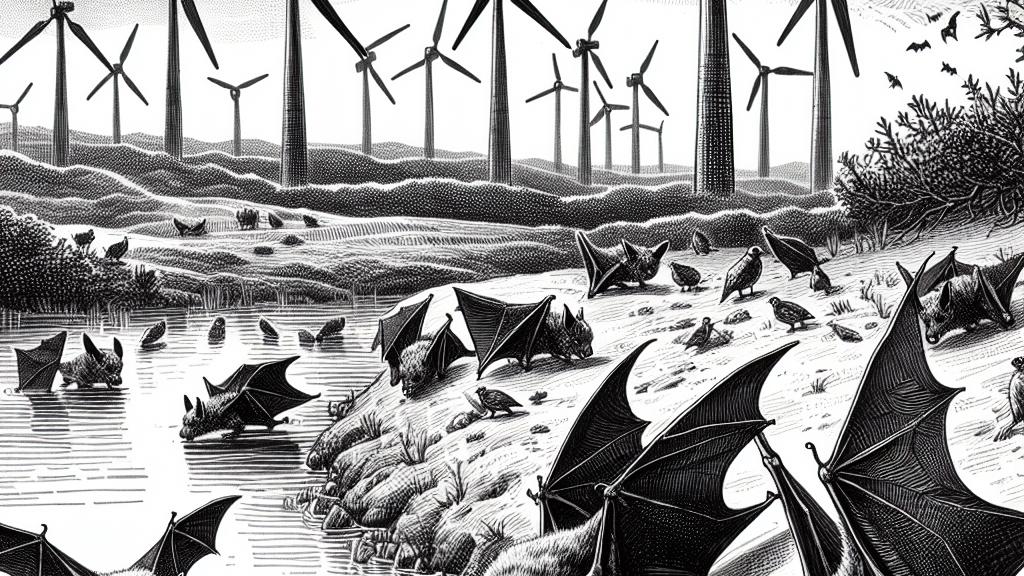How Wind Turbines Affect Bats and Their Water Access
Overview
- Wind turbines pose significant obstacles, limiting bats' access to essential water sources.
- The disruptive sounds and sight of turbines lead to many bats avoiding these critical habitats.
- Urgent and innovative conservation strategies are essential to safeguard bats while promoting renewable energy.

The Impact on Bat Habitats
In a fascinating yet concerning study conducted in Germany, researchers from the Leibniz Institute for Zoo and Wildlife Research unveiled a worrying reality: wind turbines disrupt bats' access to vital water bodies. Picture bats, those enchanting creatures that play an irreplaceable role in our ecosystems, struggling to find a sip of water during scorching summer months. They depend on small ponds and lakes for hydration and insect hunting. However, wind turbines, towering and noisy, create a barrier. Bats often avoid these water sources entirely when turbines are nearby, sometimes steering clear for kilometers! During increasingly hot summer days, their reliance on these dwindling water sources becomes even more critical, highlighting the urgent need for awareness and action.
A Double-Edged Sword
It’s bittersweet to acknowledge that while wind energy is celebrated for its role in combating climate change, it can also pose dire threats to wildlife—specifically bats. This clean energy source is vital for reducing carbon emissions and steering us toward a sustainable future. Yet, the expansion of wind farms can unintentionally drive down bat populations. Research reveals that as bats venture closer to wind turbines, their activity plummets. For instance, the presence of turbines can reduce foraging activity in open-space bats by an alarming 63%! This statistic is not just a number; it's a distress signal, revealing a striking contradiction: how do we pursue renewable energy without harming the very animals that help maintain the ecological balance?
The Urgent Need for Innovative Conservation Measures
The call for innovative conservation measures has never been more urgent. Scientists, conservationists, and energy developers must collaborate to find solutions that protect bat populations alongside renewable energy efforts. For example, strategies such as using ultrasonic deterrents, which produce sound frequencies that bats find uncomfortable, are being tested. Moreover, curtailing wind turbine operations during peak bat activity—especially during migration or breeding seasons—could feasibly reduce collision risks. The conversation must evolve; we are at a pivotal juncture where we must balance the urgent need for clean energy with the responsibility to protect vulnerable wildlife. Through diligent research, innovative thinking, and cooperative efforts, we can navigate this challenge and ensure that both bats and wind energy can thrive together.

Loading...